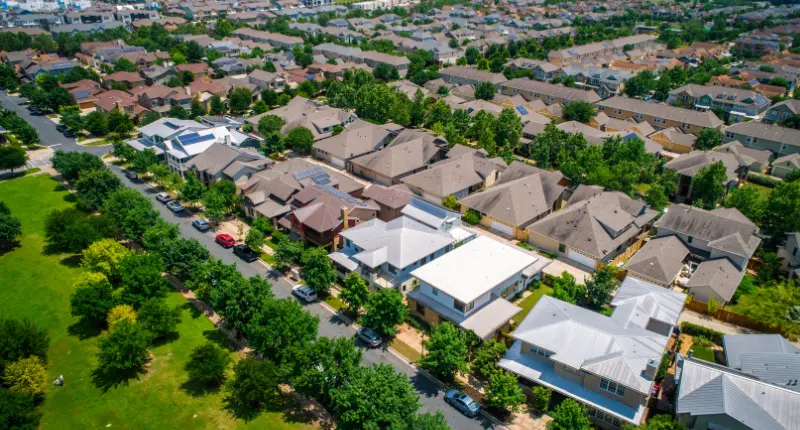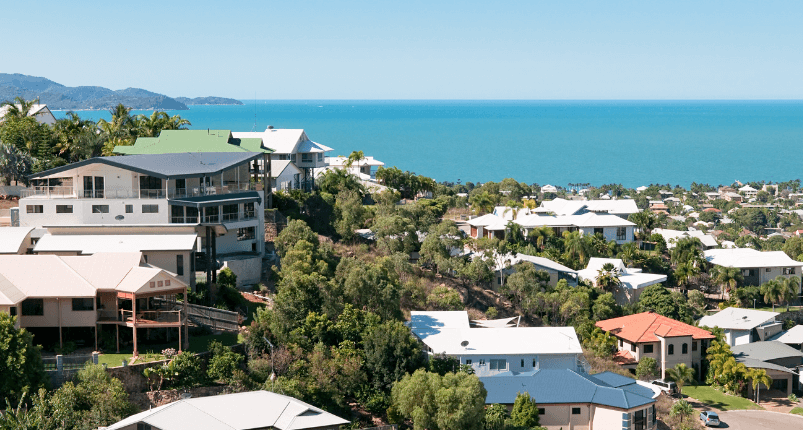- National prices rose again in September - but slower than at March's peak
- Slowdown in price due to affordability constraints, says CoreLogic's Tim Lawless
- Owner occupier first home buyer loans have fallen by more than a fifth
Data has shown national house prices increased again during September – but the rate of growth is losing steam.
CoreLogic’s national home value index recorded a 1.5% rise over the past month, meaning house values have risen by more than +17.6% over the first nine months this year and are +20.3% higher over the past 12 months.
This level of annual growth is the fastest since the year ending June 1989.
Monthly changes are in positive territory for all the capital cities.
Hobart and Canberra recorded 2.3% and 2% growth respectively – the largest of the capitals – while Darwin and Perth recorded the softest levels of growth at 0.1% and 0.3% respectively.
For regional Australia, regional NSW (2%), regional Tasmania (1.7%) and regional Queensland (1.7%) recorded the strongest gains last month.
Although growth remains positive, the CoreLogic data makes it clear the increased dwelling values have slowed down significantly. The monthly rate of growth has eased to 1.5% – a far cry from the 2.8% rate recorded in March.
Change in dwelling values – end of Sep 2021

Affordability concerns worsen
Tim Lawless, CoreLogic research director, said the lower growth conditions are reflective of higher barriers to entry for non-homeowners – especially given incentives such as HomeBuilder have now ended.
“With housing values rising substantially faster than household incomes, raising a deposit has become more challenging for most cohorts of the market, especially first home buyers,” noted Mr Lawless.
He highlighted the Sydney market as a prime example. Given the median house value is now above $1.3 million, to save for a 20% deposit – which is needed to avoid mortgage lenders insurance – a buyer would need about $262,300.
It is a point REINSW CEO Tim McKibbin has also made previously.
“Existing home owners looking to upgrade, downsize or move home may be less impacted as they have had the benefit of equity that has accrued as housing values surged.”
Data has shown that while owner-occupier first home buyer loans have fallen by 20.5% between January and July of this year, the number of first home buyers taking out an investment housing loan has increased by 45% – although this is from a low base.
This suggests more first home buyers are choosing to ‘rent vest‘ as a way of entering the property market.








